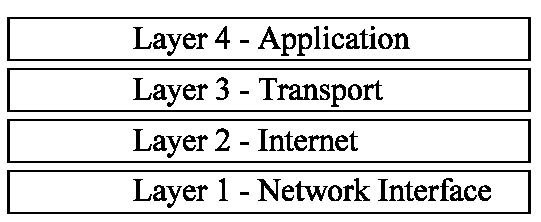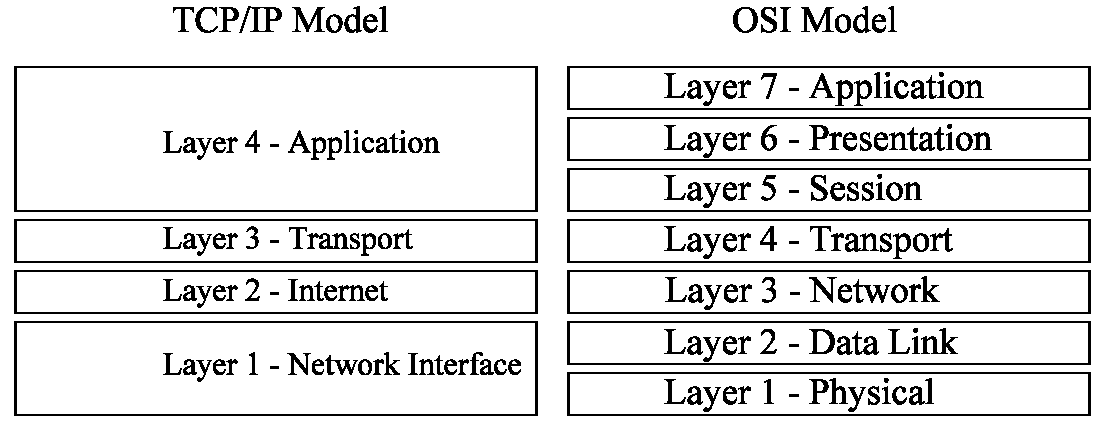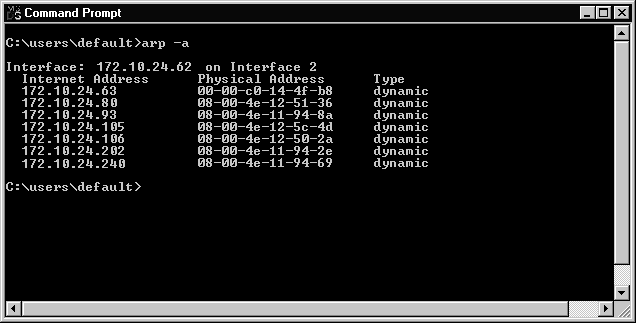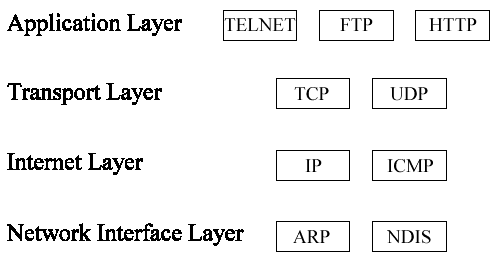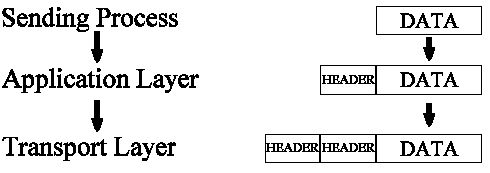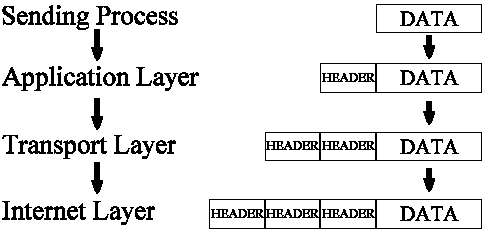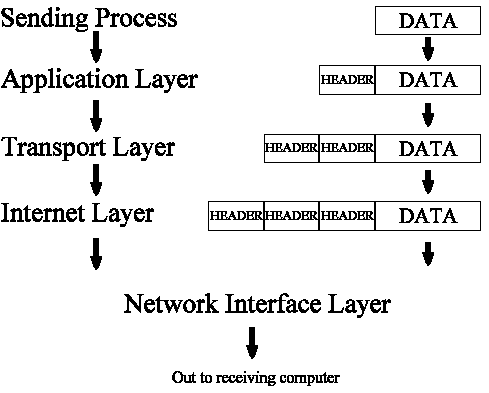The OSI model presents a standard data flow architecture, with
protocols specified in such a way that the receiving layer at the
destination computer receives exactly the same object as sent by the
matching layer at the source computer. Figure A.2 shows the OSI model
data flow.
Figure A.2 OSI Model Data Flow
As data passes from one layer to the next layer, additional formatting or addressing is
added from the sending computer so that it can be transmitted successfully.
We sent the data through the inter face of the application.the data may be voice,text,images.The sending process passes data to the application layer. The
application layer attaches an application header and then prepares the
frame and passes the
frame to the presentation layer.
The presentation layer can transform data in various ways, if
necessary, such as by translating it and adding a header. It gives the
result to the session layer. The presentation layer is not aware of
which portion (if any) of the data received from the application layer
is the application header and which portion is actually user data,
because that information is irrelevant to the presentation layer's role.
The process of adding headers is repeated from layer to layer until
the
frame reaches the data link layer. There, in addition to a data-link
header, a data-link trailer is added. The data-link trailer contains a
checksum and padding if needed. This aids in frame synchronization. The
frame is passed down to the physical layer, where it is transmitted to
the receiving computer.
On the receiving computer, the various headers and the data trailer
are stripped off one by one as the frame ascends the layers and finally
reaches the receiving process.
Although the actual data transmission is vertical, each layer is
programmed as if the transmission were horizontal. For example, when a
sending transport layer gets a message from the session layer, it
attaches a transport header and sends it to the receiving transport
layer. The fact that the message actually passes through the network
layer on its own computer is unimportant.
The data recieving process is just the reverse work done to sent.
Formatting and addressing information is stripped away at each layer as it is passed up
the layers until it arrives at the seventh layer, the Application layer, where it is
returned back to its original state that can be interpreted by the receiving computer.
HERE ARE FUNCTION AND WORKING OF THE LAYERS:
We will now discuss the purpose of each layer in the OSI model.
The Application layer is the top layer of the OSI model. It is used to allow
applications to access network services. It handles general network access, flow control,
and error recovery. Some of the functions it supports are:
 | Accessing remote files |
 | Accessing remote printers |
 | Accessing remote databases |
 | Electronic mail |
The next layer down is the Presentation layer which is located at layer 6. It is the
translator for the network as it determines the format used to exchange data among the
computers on the network. Some of its functions are:
 | Protocol conversion |
 | Data translation |
 | Data encryption |
 | Data compression |
 | Conversion of the character set |
Layer 5 is the Session layer, which establishes a communications connection between
processes running on different computers. It performs name recognition and related
functions; for example, user authentication and resource-access security that are needed
to allow processes to communicate over the network. To ensure that all data gets sent, it
uses checkpoints placed in the data stream to provide for synchronization. In the case of
network failure the only data that needs to be sent again is the data after the last
checkpoint. The Session layer is also responsible for controlling when and for how long
each side transmits.
Layer 4 is the Transport layer, which is responsible for ensuring that all the data is
delivered in the correct sequence, error free, with no losses. It is the Transport layer
that breaks up large messages into smaller packets for delivery. Some of the other
functions provided by the Transport layer are:
 | Error handling |
 | Flow control by notifying the transmitting computer to not transmit when the receiving
computer has no available receive buffers |
Layer 3, the Network layer, is responsible for determining the route that is taken from
the transmitting computer to the receiving computer. It is also responsible for addressing
messages and the translation of logical addresses into physical addresses. The Network
layer determines what path the data should take based upon several factors, including the
condition of the network and the priority of service.
Layer 2 is the Data Link layer, which is responsible for providing error-free transfer
of frames from one computer to another using the Physical layer. A frame is a
bundle of information sent as a single entity. Some of the other functions provided by the
Data Link layer are:
 | Transmitting and receiving frames sequentially |
 | Providing frame acknowledgment for frames it receives |
 | Retransmitting frames that are not acknowledged by the receiving computer |
The Physical layer is located at layer 1, the bottom of the OSI model. The Physical
layer handles the unstructured, raw, bit-stream data that is transferred over a physical
medium. It also defines how the physical medium, or cable, is attached to the Network
Interface Card (NIC). It does that by determining how many pins are in the connector that
is being used and also the function of each of the pins. The Physical layer sends out bits
equaling 1s and 0s and determines how long each bit lasts and how it is translated into
the suitable optical or electrical impulse for the network cable.
